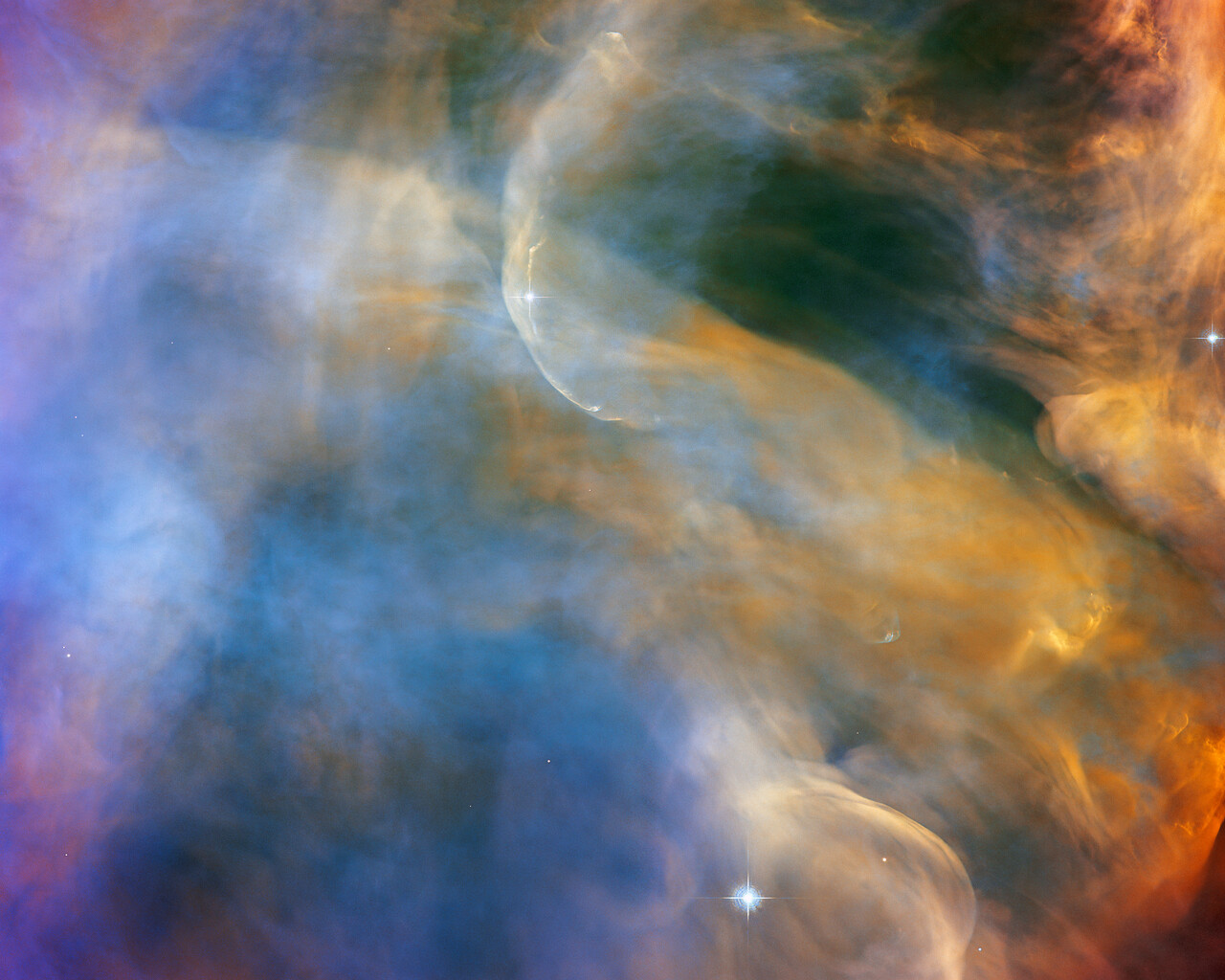Hubble snaps celestial cloudscape in the Orion Nebula: Check out this mesmerizing pic

This mesmerizing celestial landscape snapped by the NASA/ESA Hubble Space Telescope shows the colourful region surrounding the Herbig-Haro object, HH 505, which lies in the Orion Nebula - the closest large star-forming region to Earth.
NASA defines Herbig-Haro objects as a rarely seen type of nebula that occurs when hot gas ejected by a newborn star collides with the gas and dust around it at hundreds of miles per second, creating bright shock waves.
In the case of HH 505, these outflows (gracefully curving structures at the top and bottom of this Hubble image originate from the star IX Ori, which lies on the outskirts of the Orion Nebula around 1000 light-years from Earth. The outflows here are distorted into sinuous curves by their interaction with the large-scale flow of gas and dust from the core of the Orion Nebula.
One of the sky's brightest nebulas, the Orion Nebula is a dynamic region of dust and gas where thousands of stars are still forming. The proximity of this nebula to Earth makes it one of the most scrutinised areas of the night sky and has often been a target for the Hubble telescope.
The Orion Nebula is awash in intense ultraviolet radiation from bright young stars. The shockwaves formed by the outflows are brightly visible to Hubble, but the slower-moving currents of stellar material are also highlighted by this radiation.
This observation was captured with Hubble's Advanced Camera for Surveys (ACS) by astronomers studying the properties of outflows and protoplanetary discs. Sharing this picture, the European Space Agency (ESA) said that this observation was also part of a spellbinding Hubble mosaic of the Orion Nebula, which combined 520 ACS images in five different colours to create the sharpest view ever taken of the region.
📷 This NASA/ESA @HUBBLE_space Telescope shows the colourful region surrounding the Herbig-Haro object HH 505. #HerbigHaro objects are luminous regions surrounding newborn stars 👉 https://t.co/kEnBfa0NXw #SpaceArt pic.twitter.com/6IHo5RMHBU
— ESA (@esa) August 8, 2022










